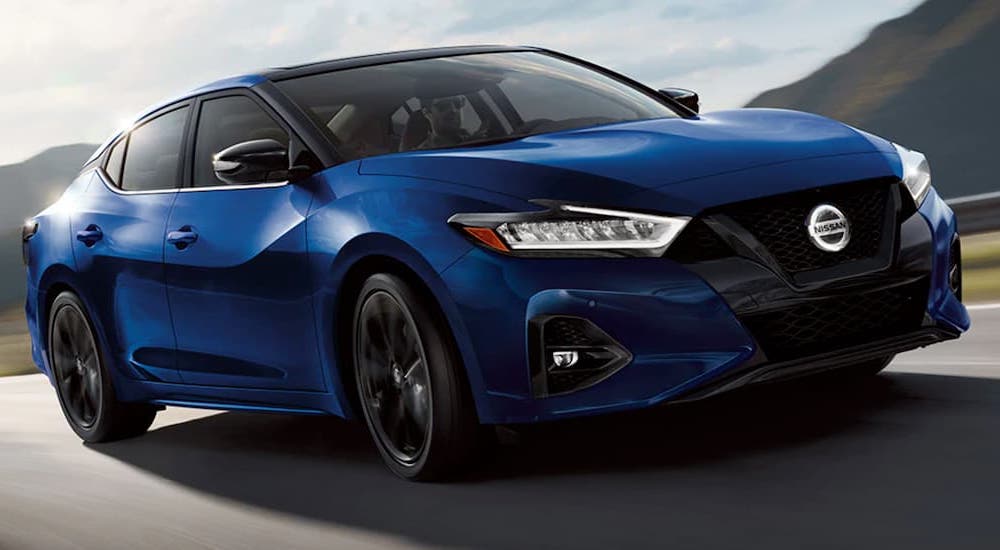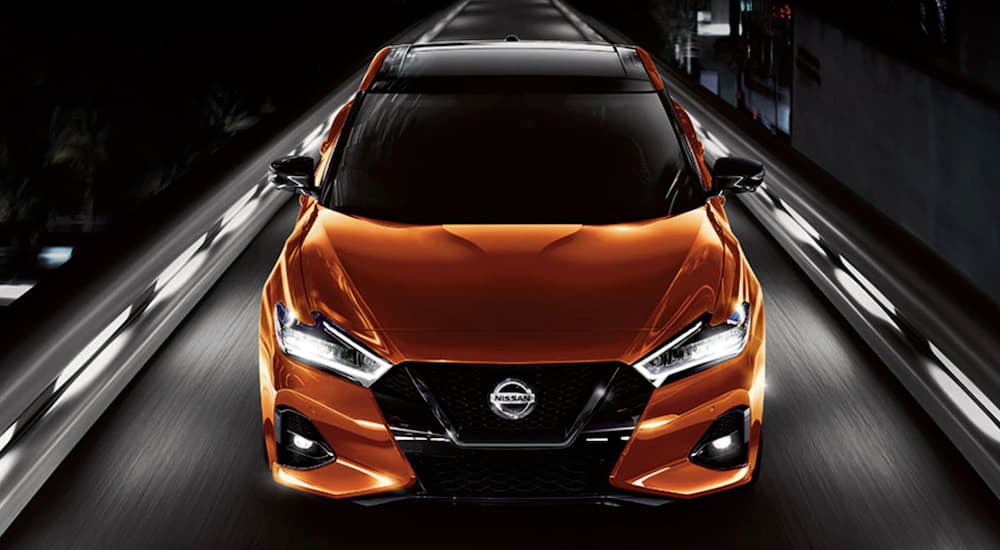Let’s look back into the past—not too far into the past, though, because what we’re discussing today is something we’ve witnessed in real-time recently. More specifically, looking back 15 to 20 years reveals how unsafe vehicles were a short time ago. Many drivers on the road today have grown up with seatbelts and airbags their entire lives, while plenty of drivers experienced the “golden years” on the road, which involved sitting on a bench seat—you’d better hang on during those tight corners. You won’t find such a thing at a Nissan dealer anymore.
Allow me to introduce you to the future, where artificial intelligence mixes with your vehicle’s state-of-the-art tech components to assist you in real-world scenarios. It’s called Nissan Safety Shield 360.
Nissan Safety Shield 360 is a safety package that comes standard on a wide range of Nissan vehicles: the Kicks, Altima, Rogue, and Titan, to name a few. In total, Nissan Safety Shield 360 includes over six assistive technologies, all with the single goal of keeping you protected when you’re behind the wheel of your Nissan vehicle. The features you can expect to see in your Nissan include Lane Departure Warning, High Beam Assist, and Automatic Emergency Braking with built-in Pedestrian Detection. That’s all well and good, but with Nissan’s safety package, we also see features such as Blind Spot Warning, Rear Automatic Braking, and Rear Cross-Traffic Alert. All three of these features rarely come standard on vehicles from competing manufacturers, especially the more value-friendly models.
Most car aficionados have certainly heard of the features built into Nissan Safety Shield 360. However, I’m sharing some specific details about what they do and how they work.
Automatic Emergency Braking
What’s the best way to prevent a collision? If you guessed stopping your vehicle is the best way, then you’re correct. Of course, nobody intentionally collides with other vehicles, pedestrians, or stationary objects—at least I hope not. Plus, everybody on the road knows how to use their brakes—otherwise, they would be in the backseat of an Uber. Regardless of how impeccable your automobile skills are, though, accidents are called “accidents” for a reason.
The challenging part of driving is that every trip is different, and being vigilant to an ever-changing landscape of responsibility takes enormous effort and energy. Even as vigilant as we can be, sometimes we’re at the mercy of other drivers or pedestrians on the road, who force us to apply the brakes at a moment’s notice.
Here are a couple of real-world examples. First, you’re driving down a road where deer commonly cross, and you’re trailing behind another vehicle going approximately 35-40 mph. All of a sudden, a deer bolts out onto the middle of the road, and the driver in front of you panics and quickly applies their brakes. In the second scenario, you’re casually driving down the street, when a pedestrian steps into the street with no crosswalk in sight. Although the pedestrian shouldn’t have done so, it’s still your responsibility to hit the brakes if such a situation arises.
These scenarios—among many others—are a few examples of how unpredictable the road can be every day. And, while it’s possible for a driver to prevent a collision outright, features such as Automatic Emergency Braking with Pedestrian Detection will lend a hand. After all, nobody is perfect—and even if you think you are, we can agree that other drivers, pedestrians, and animals around your car certainly aren’t.
If there’s any reason why your vehicle needs to come to a complete stop, the Automatic Emergency Braking will detect it with advanced sensors. First, the system will sound an alert to you, and the second you hear this “beep”, you should apply the brakes—simple. Just after this alert has sounded, your vehicle will bring itself to a complete stop—if you haven’t done so by now. These features won’t work on the highway, but during normal traversal through a city or suburb, you can expect these features to activate. With Nissan’s Pedestrian Detection, the braking system will work much the same, but to save the lives of bystanders, too.
Rear Automatic Braking & Cross-Traffic Alert
I’m grouping Rear Automatic Braking and Rear Cross Traffic Alert because they’re both utilized when reversing. Both of these features utilize the rearview camera and sensors located behind your vehicle. The premise of Rear Automatic Braking is rather simple: When you’re backing up into a parking space, your Nissan will autonomously stop if you’re about to hit something. Again, real-world scenarios are plenty, such as reversing into a shopping cart, another parked vehicle, or yes, even a lamp post or garbage can.
Of course, a reverse camera will also give you a more detailed view of the back of your vehicle for greater visibility—far better than a mirror could. Check out potholes, bicycles, and any other obstacles that you’d otherwise miss. Let’s say you’re driving a sedan, and you’re parked next to two giant pickup trucks; it’s helpful to have an extra pair of eyes—or cameras, in this case—looking out for you when backing up.
The Rear Cross-Traffic Alert system uses the aforementioned camera and sensors when you’re leaving your parking space. If any vehicle is about to pass you while you’re reversing, your Nissan will send you an alert, followed by a flashing indicator on the screen—corresponding to which direction the vehicle is coming from.
Lane Departure Warning & Blind Spot Warning
With the Nissan Safety Shield 360 comes Lane Departure Warning, an intelligent system that will detect when you’re unintentionally crossing lanes on the freeway. By utilizing a camera and sensors located on the front of your vehicle, your Nissan will intelligently sense your path by using the data it generates from the lane markers on the road. If it all sounds advanced, that’s because it is. Using it is far from advanced, though, because it’ll automatically give you a warning if you begin to stray from your lane. What makes this system smarter is that it knows when you’re intentionally trying to switch lanes—so it won’t activate if you have your turn signal on.
Speaking of switching lanes, it’s important to know what’s covering your blind spot if you want to safely move over to the fast lane or the exit ramp. Luckily, Nissan Safety Shield 360 includes an integrated Blind Spot Warning—which, as the name suggests, will warn you if another vehicle is driving in your blind spot before you try to switch. With advanced safety features such as Blind Spot Warning, the term “Blind Spot” will soon be a thing of the past. Ultimately, these features have changed the landscape for freeway driving, and the sooner more vehicles include such features, the sooner blind-spot-related collisions can become a rarity.
High Beam Assist
Lastly, the Nissan Safety Shield 360 comes with High Beam Assist. What High Beam Assist does is intelligently monitor your high beam luminance, and adjust them according to the current road visibility—while also taking other factors into account, such as oncoming vehicles. If another vehicle is approaching from the opposite end of the road, your Nissan will reduce power to the beams, decreasing brightness until the driver has passed you.
This is a passive safety feature that will run whenever you’re driving in an area with low visibility. However, drivers who prefer to control lights manually can turn this feature off—while still enjoying the other features built into Nissan Safety Shield 360.






